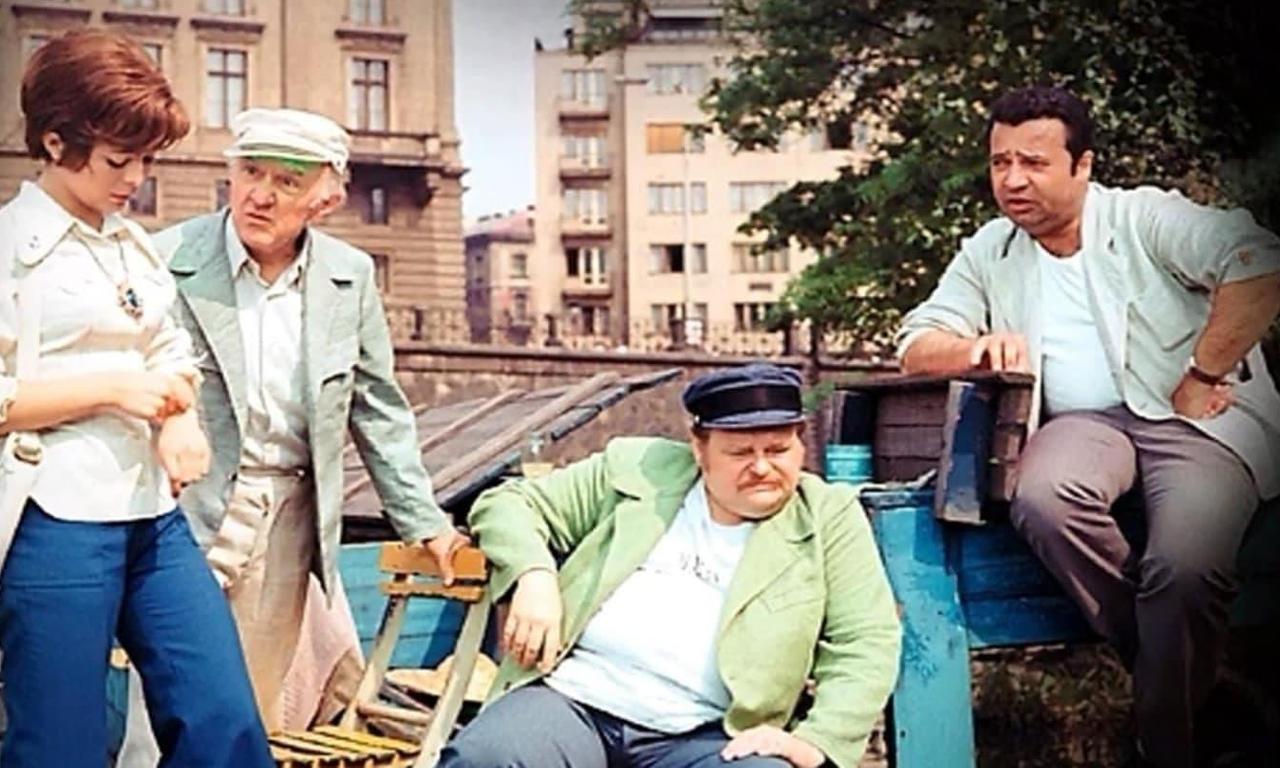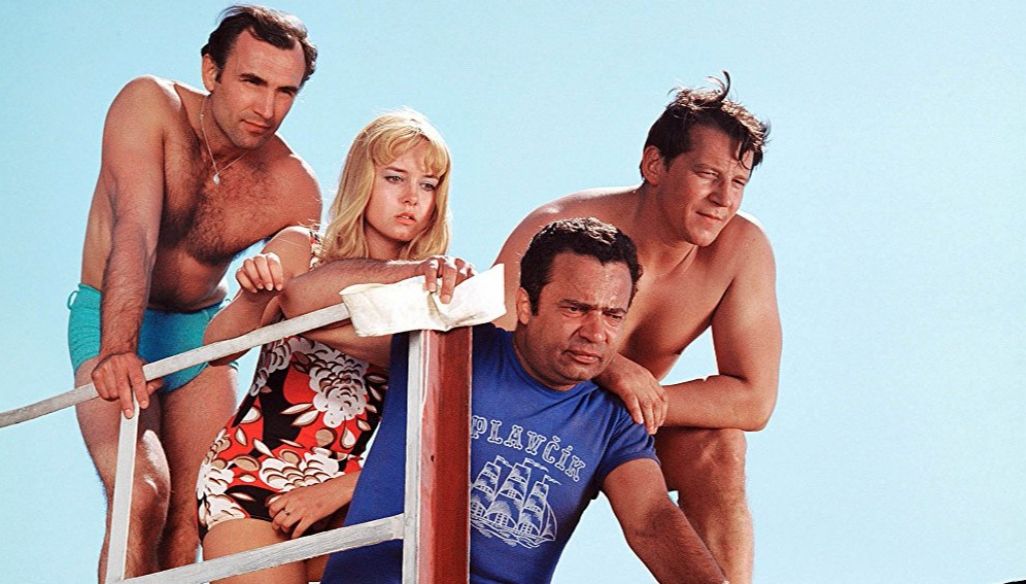
If you want to get to know the Czech cinema, you may want to start with Dr. Mracek
Czechs created an unusual cinema, completely different from other national cinemas. Their avant-garde stood out as cheerful, ingenious and, above all, simple, yet comic.
Words by Jan Tracz
Czech films were made to cheer the hearts of the citizens of contemporary Czechoslovakia. The creators did not use hidden metaphors and they didn't feel "sorry" for themselves; instead, they tried to depict their times in a mirthful way. Maybe this is why Czech movies are cult only among a few groups, whereas How to Drown Dr. Mracek, the Lawyer (from 1975), became the symbol of the comedy and fable mixture.
A few words about water spirits
Before we get to the heart of the matter, it's key to understand who are Aquarians, or water spirits; groups to which the main heroes belong. This time the director, Václav Vorlíček — the legendary figure of Czech pop culture — decided to seek inspiration from Slavic beliefs. He found out about the creatures known as aquarians. Gamers and fantasy lovers are certainly familiar with the name, but others may not be so well-informed. The legend has it that Aquarians were protective demons of water bodies (rivers, lakes, ponds). The director must have also read that, in time, it became almost impossible to differentiate an Aquarian from a human.
Czech visioner decided to use this motif and ingeniously created a family of Prague water spirits, who lived in the water and used magic tricks to make the life of the Prague residents... rather difficult. Interestingly enough, these demons were also involved in the (in)famous Kupala Night (Slavic celebration of the summer solstice). Specialists in the humanities and literature lovers will probably remember it from Erlkoenig by Goethe or the Lilije ballad by Adam Mickiewicz, one of the most important Polish writers. It's mesmerising how all those inspirations intertwine across genres and time.

How to Drown Dr. Mracek, the Lawyer (1975)
Short descriptions come in handy
You are probably wondering: “What is it all about?” So, long story short: the movie is set in Prague, this beautiful and undestroyed by war capital city. The family of water spirits, with a despotic and despicable Wassermann as their leader, get into mischief and do whatever they fancy doing. Due to some complications, a certain Dr. Mracek wants to evict them from an insulated building, so the malevolent clan decides to get rid of him. De facto, everything goes according to the plan... but only up to a certain point! The drowning man is rescued by Jana Vodickowa who has (obviously, right?) family affinities with the attempted murderers. They fall in love and try to reconcile the feuding parties, thus there is a conflict of arguments and the fable goes on.
The Czech cinema never dealt with difficult or national topics. Of course, I am not talking about Forman, who had a career abroad and became a living legend. While in Poland, Wajda was showing the history of Poland and trying to lift our spirits, Czechs were dancing on the border of absurdity and charm. In Bohemia, such directors as Václav Vorlíček, Jindřich Polák, or even Jiří Menzel, simply made people smile thanks to their crazy stories. Let's take the film called Tomorrow I'll Wake Up and Scald Myself with Tea as an example. Time travel, outer space, and a Czech Adolf Hitler – only Czech screenwriters could have come up with something like that.

How to Drown Dr. Mracek, the Lawyer (1975)
These special effects...
In the Czech cinema, special effects are absolute artistry. Of course, in the era of HD and 4K television we will instantly spot all mistakes and screw-ups; yet, it does not mean, however, these 70s' special effects are still really impressive and remarkable. In Dr. Mracek, we will find plenty of evidence for my statement. There are scenes in which people (Aquarians, of course) transform into everyday objects or in which fish have human heads. There is the Czech romance with the film form, as everything turns out to be unconventional and the authors provide only innovative ideas for their audience.
Maybe sometimes they're simple, but they are never flawed– in this film, there are only funny and funnier sequences. Furthermore, you won't find humour based on the contemporary political system or referring to politics in any way. The humour is based on Czech customs and the so-called slapstick comedy (the director probably draws on Chaplin's productions). In other words, it is amusing all the way and the special effects only add more charm.
The craftsmanship of Czech actors
The film is a team creation: as we know, even a splendid acting performance will not save a terribly written script or poor cinematography. It's the same with this movie – everyone did their best. However, the actors' collective performance is both impressive and mesmerizing. I bet that the reader will most probably not be familiar with any of the names here, but we will find an array of stars in the movie: of people who are responsible for the birth of the ambitious avant-garde. They prove that Czech actors are at least as good as foreign ones. So, who can we see in the film?
Let's begin with Vladimír Mensíkz: one of the most popular Czech actors, he was a real star in his own country; an extraordinary comedy actor. There's also Miloš Kopecký, who's a bit older in Dr. Mracek, but he still plays the leading role. He played in Dinner for Adele and delighted the audience in a cult TV series – Hospital at the End of the City. These artists do not act, they are: they speak, wave, walk, run and jump just like any other people, but there is some magic. something physically unattainable. In a nutshell, they delight the viewers with normalcy and honesty. One day, you should definitely take a closer look at the filmography of the main characters (Libuše Šafránková and Jaromír Hanzlík) who also had great careers.

How to Drown Dr. Mracek, the Lawyer (1975)
An evening with Velkopopovický Kozel
The very best screening option? Just to a grocery store and buy the popular Czech Kozel beer. Afterwards, get a copy of Dr. Mracek and enjoy your movie night. When you finish the first movie, take another one. I recommend the aforementioned film about tea. Alternatively, you can watch Arabela – an extraordinary continuation of Dr. Mracek's adventures. It is effortless to become fascinated with other nations and their legacies but somehow Czech's legacy escapes our attention. Bohemia is waiting for us wide open. It welcomes us and encourages us to see its originality.


